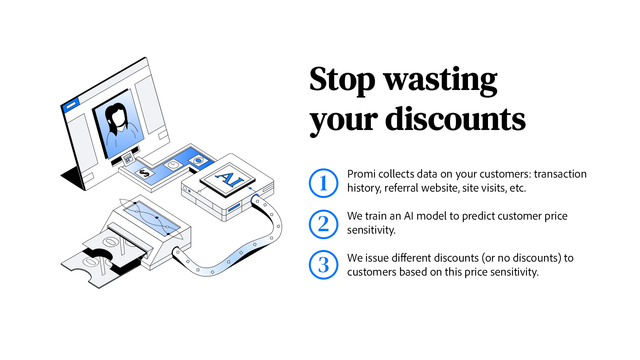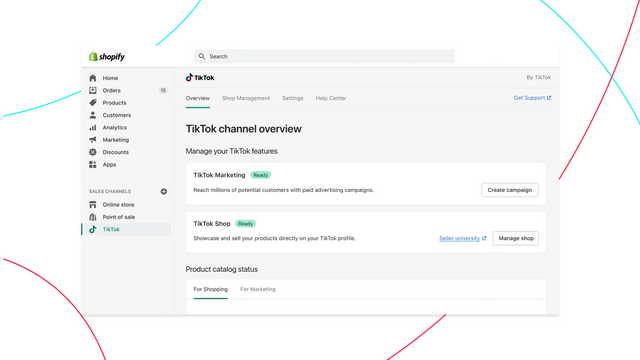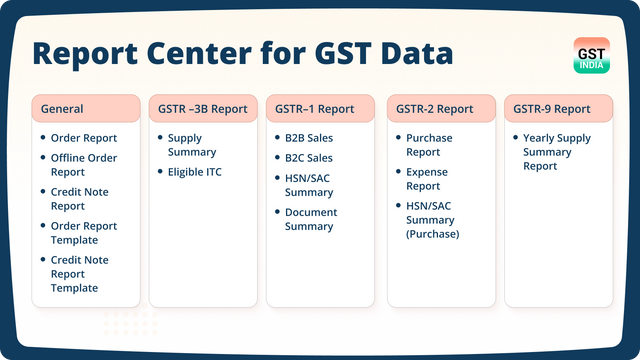In today's competitive digital marketplace, boosting electronics sales on Shopify requires a strategic approach that combines understanding the platform, implementing effective strategies, optimizing your store, leveraging social media, and continuously analyzing and improving your sales performance. By following these steps, you can maximize your sales potential and drive success in the electronics industry.
Understanding the Basics of Shopify for Electronics
When it comes to selling electronics on Shopify, having a user-friendly interface is crucial. Customers should be able to navigate your store easily, locate their desired products, and make secure purchases without any hassle.
Shopify offers a range of key features specifically tailored for electronics retailers. These features include inventory management, order tracking, customer segmentation, and integration with popular shipping providers. By utilizing these features effectively, you can streamline your operations and provide a seamless experience for your customers.
One of the most important aspects of selling electronics online is the ability to effectively manage your inventory. With Shopify's inventory management feature, you can easily keep track of your stock levels, set up notifications for low stock items, and even automate the process of reordering products when they run out. This ensures that you never disappoint your customers by selling out of their favorite gadgets.
Another crucial feature offered by Shopify is order tracking. As an electronics retailer, it's important to provide your customers with real-time updates on the status of their orders. With Shopify's order tracking feature, you can easily generate tracking numbers, provide shipping updates, and even send automated notifications to your customers, keeping them informed every step of the way.
Customer segmentation is another powerful tool provided by Shopify for electronics retailers. By categorizing your customers based on their preferences, purchase history, and demographics, you can create targeted marketing campaigns that are more likely to resonate with your audience. For example, if you have a new line of smartphones, you can send personalized emails to customers who have previously purchased smartphones from your store, informing them about the latest models and exclusive offers.
Integration with popular shipping providers is yet another advantage of using Shopify for your electronics store. By seamlessly integrating with shipping providers like UPS, FedEx, and DHL, you can easily generate shipping labels, calculate shipping costs, and provide accurate delivery estimates to your customers. This not only saves you time and effort but also ensures that your customers receive their orders in a timely manner.
In conclusion, Shopify offers a comprehensive set of features specifically designed for electronics retailers. From inventory management to order tracking, customer segmentation to integration with shipping providers, Shopify provides all the tools you need to run a successful online electronics store. By leveraging these features effectively, you can provide a seamless shopping experience for your customers and boost your sales in the competitive electronics market.
Strategies to Increase Electronics Sales
When it comes to boosting electronics sales, there are several strategies that can be implemented to drive growth and increase revenue. One highly effective approach is to implement competitive pricing strategies. By conducting thorough market research and gaining a deep understanding of the pricing dynamics within your industry, you can position your products at competitive price points. This not only gives you an edge over your competitors but also attracts price-conscious customers who are constantly on the lookout for the best deals.
However, competitive pricing is just one piece of the puzzle. To truly maximize your sales potential, it is essential to utilize upselling and cross-selling techniques. Upselling involves offering customers a higher-priced alternative to the product they initially intended to purchase. This can be achieved by highlighting the additional features, enhanced performance, or superior quality of the higher-priced option. By effectively upselling, you not only increase the value of each transaction but also provide customers with a wider range of choices.
In addition to upselling, cross-selling is another powerful technique that can significantly boost electronics sales. Cross-selling involves suggesting complementary products to customers based on their current purchase. For example, if a customer is buying a smartphone, you can recommend accessories such as phone cases, screen protectors, or wireless headphones. By strategically placing these complementary products in front of customers, you increase the likelihood of them making additional purchases, thereby increasing your average order value.
Furthermore, it is crucial to create a seamless and personalized shopping experience for your customers. This can be achieved through various means, such as implementing a user-friendly website with intuitive navigation, providing detailed product descriptions and specifications, and offering personalized recommendations based on customer preferences and browsing history. By tailoring the shopping experience to individual customers, you enhance customer satisfaction and increase the likelihood of repeat purchases.
Moreover, investing in effective marketing and advertising campaigns is essential to drive awareness and generate interest in your electronics products. This can be done through various channels, including social media platforms, search engine marketing, influencer collaborations, and traditional advertising mediums. By strategically targeting your marketing efforts towards your target audience, you can effectively communicate the unique value proposition of your products and entice potential customers to make a purchase.
Lastly, providing exceptional customer service is paramount in building long-term customer relationships and driving repeat business. This includes offering prompt and helpful assistance to customers, addressing their queries and concerns, and providing hassle-free returns and exchanges. By prioritizing customer satisfaction, you not only increase the likelihood of positive word-of-mouth referrals but also foster customer loyalty, leading to increased sales and revenue.
Optimizing Your Shopify Store for Better Visibility
Improving the visibility of your Shopify store is essential for driving more traffic and increasing sales. One of the most important aspects of visibility is search engine optimization (SEO). Implementing SEO best practices, such as optimizing product descriptions and titles, using relevant keywords, and creating high-quality content, can help your store rank higher in search engine results pages.
When it comes to optimizing product descriptions, it's important to go beyond just providing basic information. Take the time to craft compelling and detailed descriptions that highlight the unique features and benefits of your products. By doing so, you not only improve your chances of ranking higher in search results but also increase the likelihood of converting visitors into customers.
In addition to optimizing product descriptions, optimizing product titles is equally important. Your product titles should be concise, yet descriptive, and should include relevant keywords that potential customers are likely to search for. By incorporating these keywords into your titles, you can increase the visibility of your products and attract more targeted traffic to your store.
Another crucial aspect of SEO is creating high-quality content. This goes beyond just product descriptions and titles. Consider adding a blog section to your Shopify store where you can regularly publish informative and engaging articles related to your industry or niche. By providing valuable content, you not only establish yourself as an authority in your field but also attract organic traffic from search engines.
Additionally, with the increasing popularity of mobile devices, it's crucial to optimize your store for mobile users. By ensuring that your store is responsive and mobile-friendly, you can provide a seamless browsing and purchasing experience for customers using smartphones and tablets.
When optimizing for mobile, consider factors such as page load speed, mobile-friendly navigation, and responsive design. A slow-loading website can deter users and negatively impact your search engine rankings. Similarly, a poorly designed mobile interface can lead to frustration and cart abandonment. By prioritizing mobile optimization, you can cater to the growing number of mobile users and improve the overall user experience on your Shopify store.
Furthermore, don't forget to leverage social media to increase the visibility of your Shopify store. Establishing a strong presence on platforms like Facebook, Instagram, and Twitter can help you reach a wider audience and drive more traffic to your store. Share engaging content, run targeted ads, and interact with your followers to build brand awareness and encourage customer engagement.
In conclusion, optimizing your Shopify store for better visibility requires a multi-faceted approach. By implementing SEO best practices, optimizing for mobile users, and leveraging social media, you can increase your store's visibility, attract more targeted traffic, and ultimately drive more sales.
Leveraging Social Media for Shopify Sales
Social media can be a powerful tool for driving sales on Shopify. By utilizing effective social media marketing strategies, you can reach a wider audience, engage with potential customers, and increase brand awareness.
Integrating social media with your Shopify store can also enhance your sales potential. By adding social media share buttons, enabling social login options, and showcasing user-generated content, you can create a social proof that builds trust and encourages potential customers to make a purchase.
Analyzing and Improving Your Sales Performance
Continuously analyzing and improving your sales performance is crucial for long-term success. Shopify offers robust analytics tools that provide insights into your store's performance, customer behavior, and sales trends.
Using Shopify analytics, you can track key metrics such as conversion rate, average order value, and customer lifetime value. By identifying areas of improvement and implementing data-driven strategies, you can effectively optimize your store and increase your sales.
Furthermore, adopting a mindset of continuous improvement and adaptation is essential. Stay up to date with industry trends, customer preferences, and emerging technologies. Be proactive in experimenting with new marketing strategies and sales techniques to stay ahead of the competition and meet the evolving needs of your customers.
Conclusion
In conclusion, by understanding the basics of Shopify for electronics, implementing effective strategies to increase sales, optimizing your store for better visibility, leveraging social media, and continuously analyzing and improving your sales performance, you can boost electronics sales on Shopify and achieve your business goals. With dedication, perseverance, and a customer-centric approach, success in the electronics industry on Shopify is within reach.
Ready to elevate your Shopify electronics store to the next level? Let Owlfred, your wise and friendly guide from OwlMix, lead the way to a treasure trove of Shopify apps that can transform your online business. Whether you're looking to enhance your marketing, streamline inventory management, or optimize your store's SEO, OwlMix has you covered. With a curated selection of apps organized for your convenience, finding the right tools has never been easier. Don't miss out on the opportunity to optimize your store and boost your sales. Find your next Shopify app today and let your business soar with Owlfred's expert recommendations!

















